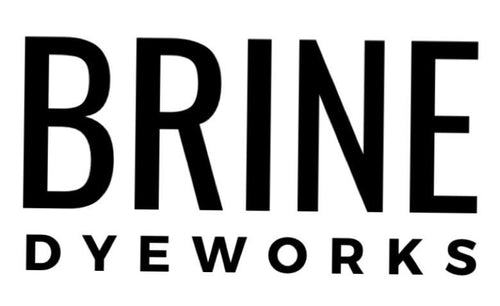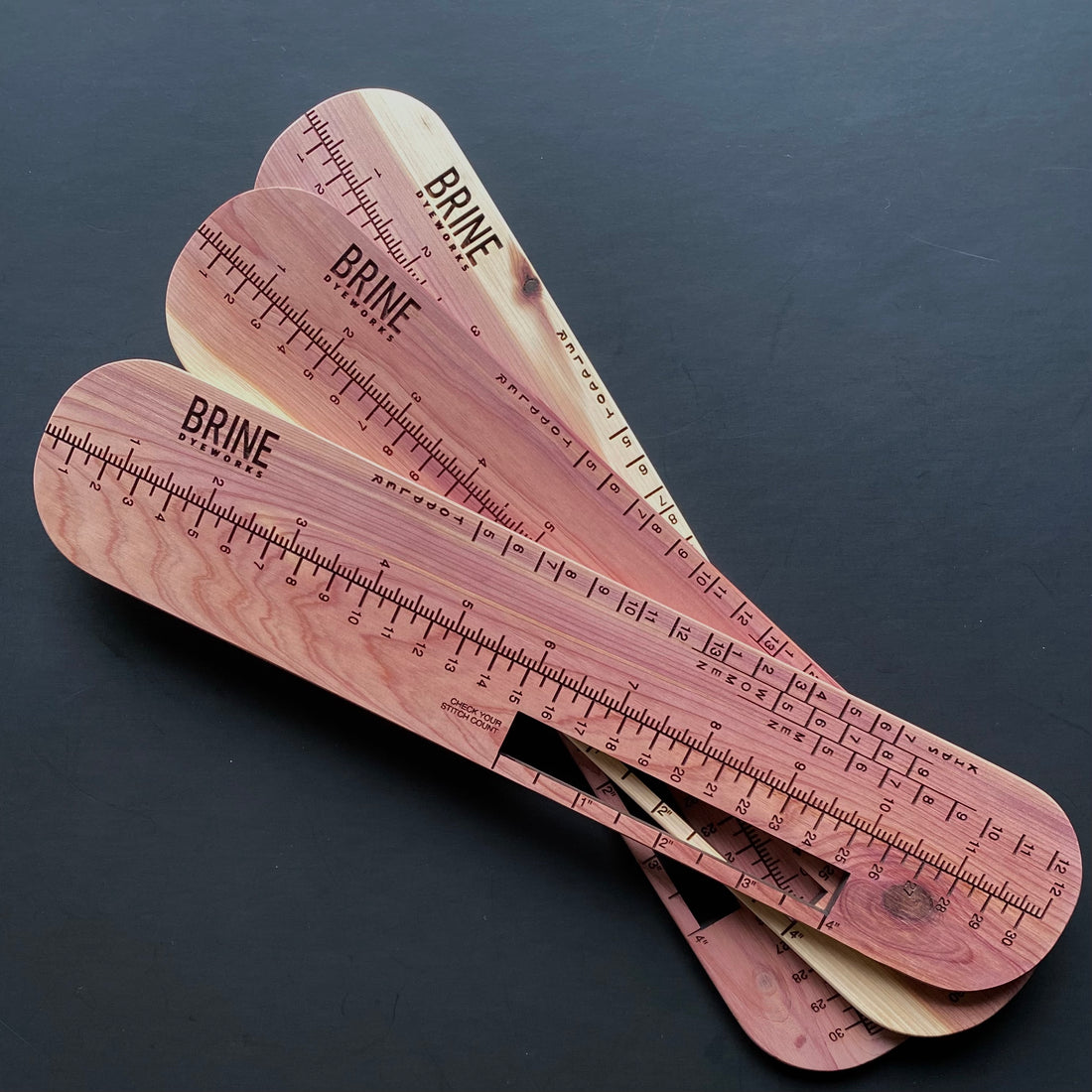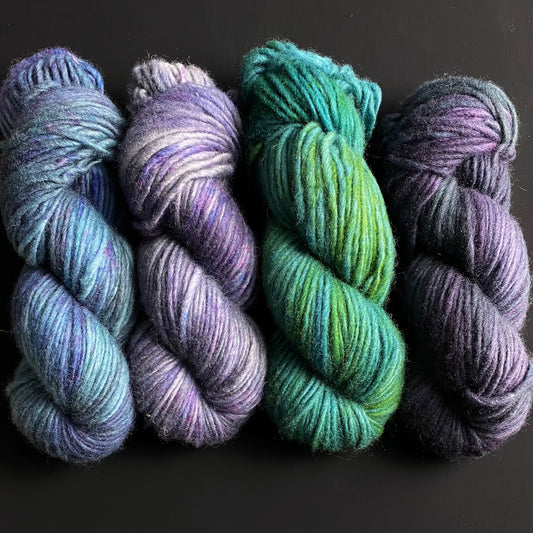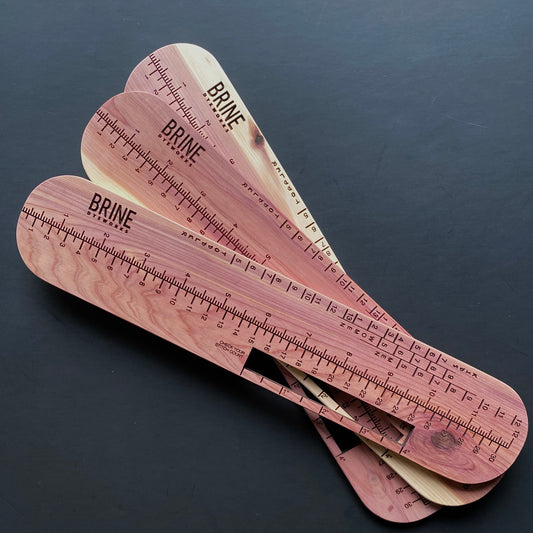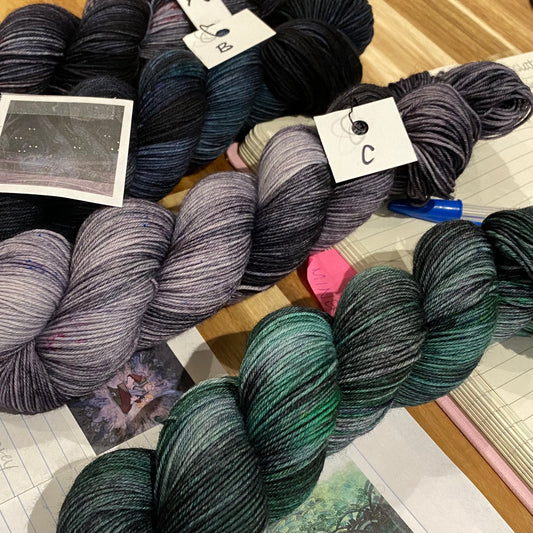
Your sock ruler can be used in a few different ways!
You can measure the length of your foot by standing on it. For the most accurate measurement, set it flat on the floor with the zero edge against the wall, and then stand on it, butting your heel up against the wall.
You can use the shoe size chart to convert your size into centimeters or inches.
You can use the cm/inch ruler to measure the height of your cuff for either toe up or top down socks.
You can use it to help place your heel for toe-up socks:
- Step 1: measure total foot length, or use the size guide to determine how long the foot of the sock needs to be. This is “measurement A”.
- Step 2: knit the toe of your sock, and then insert the zero edge of sock ruler into the knitted toe. Measure the length of the knitted toe. This is “measurement B”.
- Step 3: Short row heels typically take up the same amount of length as toes (because the decrease pattern for the heel mirrors the increase pattern for toes, the difference being you do it only on the bottom of your sock instead of the bottom and the top) . Measurement A - Measurement B = Measurement C. This is the length of the foot of the sock without the heel. (Alternately, your pattern may tell you how far to knit before starting the heel ie. total foot length minus 2”. In this case, subtract this amount from measurement A to get your measurement C.)
- Step 4: Knit approximately to the length indicated by measurement C. This is where you need to start your heel.
Similarly, you can use your sock ruler to help place your toe in a cuff down sock:
- Step 1: measure total foot length, or use the size guide to determine how long the foot of the sock needs to be. This is “measurement A”. Knit the cuff of your sock to your desired length (you can measure against your sock ruler!).
- Step 2: knit the heel of your sock. Once your heel is complete, use your sock ruler to measure the length of the heel from the “heel corner” (where the cuff part of the heel meets the foot part of the heel, or right where your heel turn has happened). This is “measurement B”.
- Step 3: Toes typically take up the same amount of length as short row heels, as how you do the decreases for each is the same. Measurement A - Measurement B = Measurement C. This is the length of the foot of the sock including the heel, but without the toe. (Alternately, your pattern may tell you how far to knit before starting the toe ie. total foot length minus 2”. In this case, subtract this amount from measurement A to get your measurement C.)
- Step 4: Knit approximately to the length indicated by measurement C. This is where you need to start your toe.
It is important to avoid stretching your sock while measuring it. Ensure the fabric is smooth, but don’t add any tension to it.
If you are a visual learner, I recommend this video link to see some of the ways you can use your ruler: https://www.youtube.com/watch?v=44nZozR_xeo (Sock Ruler/ How To Use!/ Crazy Sock Lady)
Adult socks typically have 10% negative ease and measure approximately 1/2" or 1.3 cm shorter than the foot length and 1" or 2.5 cm smaller than the leg or foot circumference. I don’t personally adjust sock length for negative ease, and just knit to the true length of my foot.
Here’s a women’s shoe size (US) to cm chart as there were a few that were missed on the ruler itself:
|
Women’s Shoe Size (US) |
Centimeters |
|
4 |
20.8 cm |
|
5 |
21.6 cm |
|
6 |
22.5 cm |
|
7 |
23.5 cm |
|
8 |
24.1 cm |
|
9 |
25.1 cm |
|
10 |
25.9 cm |
|
11 |
26.7 cm |
|
12 |
27.6 cm |
